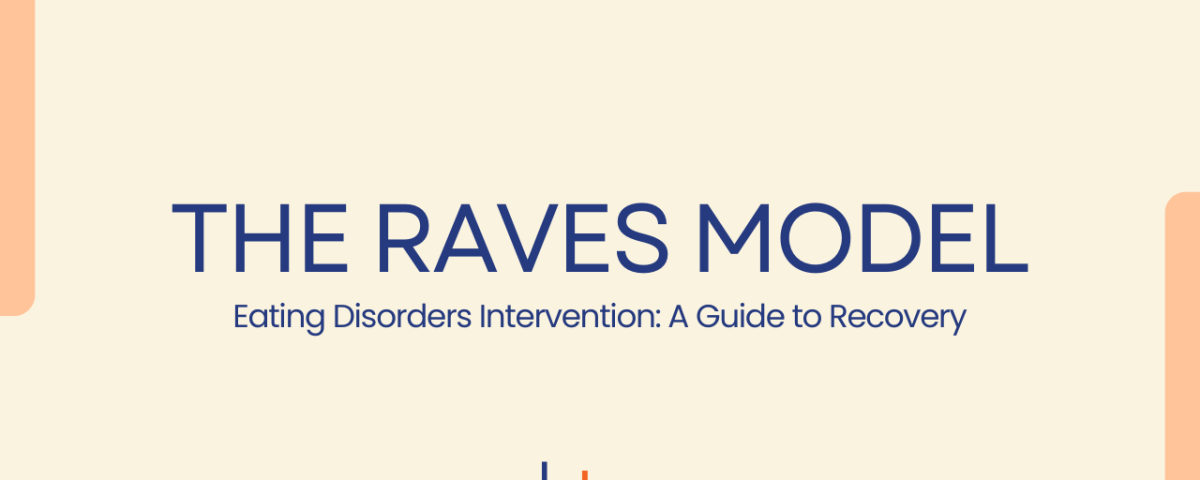The RAVES Model for Eating Disorders Intervention
Eating disorders are complex mental health conditions that require specialised, evidence-based approaches for treatment. Among the most effective frameworks for nutritional rehabilitation is the RAVES model. This blog explores the RAVES model for eating disorders intervention and how our dietician, based on the Gold Coast, can support individuals on their journey to recovery.
What is the RAVES Model?
The RAVES model, developed by dietician Shane Jeffrey, provides a structured approach to normalising eating behaviours and improving the relationship with food. It is an acronym that stands for:
- Regularity
- Adequacy
- Variety
- Eating Socially
- Spontaneity
This model emphasises a gradual and sustainable return to intuitive eating patterns. By focusing on these five key principles, the RAVES model helps individuals with eating disorders rebuild trust in their body’s hunger and fullness cues, while addressing the psychological barriers that perpetuate disordered eating.
Breaking Down the RAVES Model
1. Regularity
Establishing a consistent eating pattern is the cornerstone of the RAVES model. People with eating disorders often experience disrupted meal timings, leading to physiological and emotional imbalances.
By encouraging individuals to eat at regular intervals (e.g., three meals and two to three snacks per day), this principle ensures that the body receives consistent nourishment. Regular eating helps stabilise blood sugar levels, reduces binge urges, and lays the foundation for rebuilding trust in food.
2. Adequacy
Adequacy focuses on ensuring that individuals consume enough energy and nutrients to meet their body’s needs. Many people with eating disorders struggle with under-eating, which can lead to malnutrition and other health complications.
A dietician plays a crucial role in this step by creating personalised meal plans that meet caloric and nutritional requirements, while addressing fears associated with portion sizes or certain food groups.
3. Variety
Eating a wide range of foods is essential for both physical health and psychological recovery. The variety principle encourages individuals to expand their dietary repertoire, challenging food rules and fears.
This step helps to reintroduce previously avoided foods and ensures that all macro- and micronutrient needs are met. Over time, this promotes a balanced and enjoyable relationship with food.
4. Eating Socially
Social isolation around meals is a common feature of eating disorders. The RAVES model encourages individuals to re-engage in shared eating experiences, whether it’s dining with family, friends, or in group settings.
Eating socially not only helps to normalise food behaviours but also fosters connection, reduces anxiety, and combats the secrecy often associated with disordered eating habits.
5. Spontaneity
The ultimate goal of the RAVES model is to achieve spontaneity—the ability to eat flexibly and intuitively without rigid rules or fear. This involves trusting your body’s hunger and fullness signals, making food choices based on preferences, and adapting to various situations without distress.
How Our Dietician Can Support Recovery
Recovering from an eating disorder is a multifaceted process, and the guidance of a skilled dietician is invaluable. At CBT Professionals on the Gold Coast, our dietician offers compassionate, evidence-based care to support individuals at every stage of recovery.
Personalised Meal Planning
Each individual’s recovery journey is unique. Our dietician develops tailored meal plans that align with the principles of the RAVES model, ensuring they meet nutritional needs while addressing specific fears and challenges.
Nutritional Education
Understanding the body’s nutritional requirements is a key part of recovery. Our dietician provides clear, non-judgemental education to dispel myths about food and nutrition, empowering individuals to make informed choices.
Challenging Food Rules
Many people with eating disorders hold rigid beliefs about what they can and cannot eat. Our dietician works collaboratively to challenge these rules and gradually reintroduce feared foods, fostering a healthier relationship with food.
Building Trust in Hunger and Fullness Cues
Reconnecting with the body’s natural hunger and fullness signals can be daunting. Using the RAVES framework, our dietician guides individuals in recognising and responding to these cues, paving the way for intuitive eating.
Support for Families and Carers
Families play a vital role in the recovery process. Our dietician provides guidance to families and carers, helping them create a supportive environment and understand how to assist their loved one effectively.
Why the RAVES Model Works
The RAVES model is grounded in evidence-based practices and has been shown to:
- Address both the physical and psychological aspects of eating disorders.
- Promote sustainable recovery by focusing on long-term behavioural change.
- Empower individuals to reclaim their relationship with food and their body.
By targeting the root causes of disordered eating and providing a clear, structured path to recovery, the RAVES model offers hope and healing for those struggling with eating disorders.
Take the First Step Towards Recovery
If you or someone you love is battling an eating disorder, know that help is available. At CBT Professionals on the Gold Coast, our dietician is here to provide compassionate, expert support to guide you through recovery.
Eating disorders can feel overwhelming, but with the right tools and guidance, recovery is possible. The RAVES model offers a roadmap to rebuilding trust in food and rediscovering the joy of eating. Let us help you take that first step today.
For more information or to book an appointment, visit CBT Professionals or contact our Gold Coast clinic directly.
Helensvale: (07) 5551 0251
Mount Gravatt: (07) 3102 1366
Nerang: (07) 5668 3490
Disclaimer
This blog is for informational purposes only and is not a substitute for professional medical advice, diagnosis, or treatment. Always seek the advice of your doctor or qualified health provider with any questions you may have regarding a medical condition.
THREE CONVENIENT LOCATIONS
MOUNT GRAVATT
Mt Gravatt Medical PrecinctSE 105, 1808 Logan Rd
Upper Mount Gravatt QLD 4122


